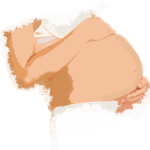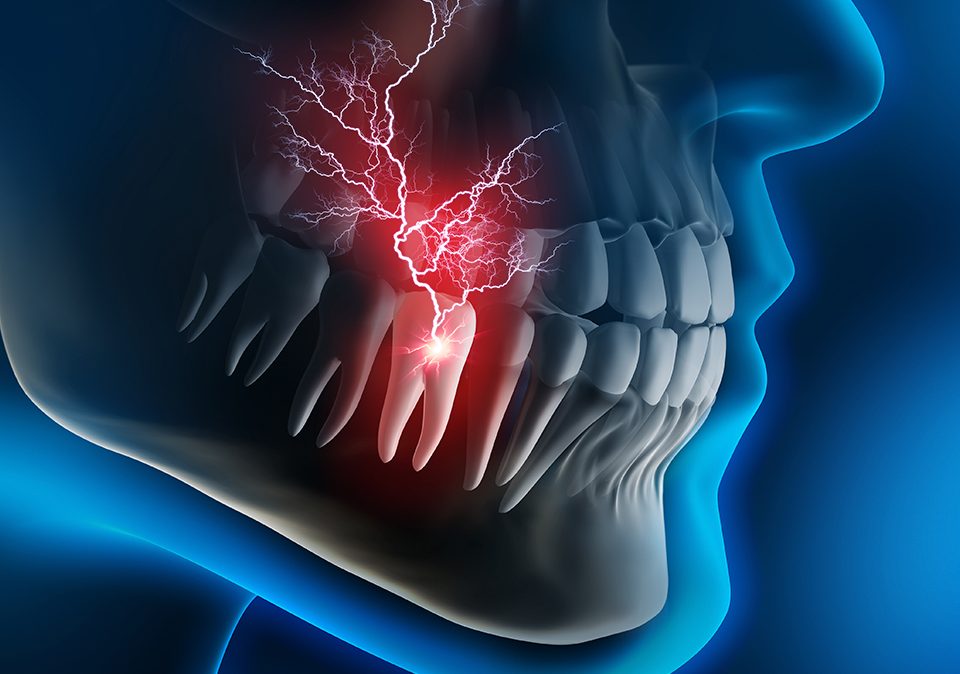
The consumer power revolution
13 November, 2013
Helping People Buy
14 February, 2014
19 December, 2013
Damn new Spanish abortion law.

Emptiness and an overwhelming sense of sadness: that is what it feels like when you’re about to lose your child during pregnancy. Although I had heard of similar experiences, I couldn’t imagine how I would be: alone, with no desire to do anything, angry, extremely irritable. Everything bothers you because with all your eagerness to meet your baby, it will not come after all.
On Friday, August 3rd 2012, just shy of reaching 20 weeks of gestation with my second child, I received a call from my gynecologist to move up my routine echograph. Although the date change was due to the doctor’s busy schedule, it found me nervous and I immediately put my guard up: “We have the detailed results from the genetics analysis. It has 47 chromosomes. It appears the problem is with the fifteenth. It could be Angelman or Prader-Will”.
“Angleman? Prader – what? What are you talking about? But the first results were all normal!” I said. The doctor’s response only confused me more. It seemed as if she was speaking Chinese: “There’s another possibility that after all it won’t be anything but we have to check it quickly because you’re about to reach the limit for voluntary interruption of twenty two weeks. Come down right now to do the analysis. We have to discard uniparental disomy.”

My husband was by my side. Just a month ago we received the first results of the amniocentesis and everything was fine. In our previous pregnancy the following results also turned out fine so, how could we imagine that on this occasion the opposite would occur? Angelman! We knew a little girl with Angelman. She couldn’t move, she didn’t speak, and she couldn’t go to the bathroom alone. Only one thought surfaced: we can’t have this baby, we believe in a full life.
We went to do the analysis. The tension led to my husband passing out. His body couldn’t take it any more. It was his baby girl the doctor was talking about, the little one that he was so eager to see born. We ended up in Emergency. Six hours later of the news and doing the blood analysis for a test called peripheral blood karyotype, we returned home and directly we went to search on the Internet for answers to our questions. What could it mean that our little one could have a problem with chromosome 15?
What we read, confirmed how little we understood the doctor. Genetics are complex, a fairly new science and it is very complicated to find information, at least for someone that isn’t an expert in medical terms. By midnight we had decided there was no hope. An extra chromosome means an illness for life and if it’s fifteen it’s related to autism, epilepsy or nearly vegetative states. I went to bed devastated. My husband couldn’t sleep and continued to navigate the Internet until sunrise, in a forum he met Vanessa Torres Torralbo, from Madrid, someone who shared about idic15.

If at some moment in time you find yourself in a situation similar to ours, please take the reins and act. Don’t leave in the doctors’ hands anything more than giving you the information and results that you need. No matter how complicated the situation you face, they cannot make decisions for you. It is your baby. It’s your little one and only you can be responsible for the situation. Take the bull by the horns from the start and go forth because the unexpected may happen.
And that’s what we did. We agreed to remain as calm as possible and to take the reins of the situation. During the weekend we did no more than read on the Internet and Sunday afternoon we created a plan: we would make the decision to abort once all other options suggesting that the little one was fine were exhausted. If all the tests and all the specialists that we could contact agreed on the negative prognosis, then we wouldn’t go forward. We would do all the tests possible, comparing results and we would contact the world’s best genetic specialists. We had to fight for her; and if at the end a miracle happens and everything is fine? My husband and I are entrepreneurs we know nothing else but to fight and that situation required that we give the best of ourselves.

On Monday we returned to the doctor’s office. They didn’t want to let me by because I didn’t have an appointment. With how I got, I was the next to go in! We asked our gynecologist to do all the genetic tests possible and a cordocentesis or funicolocentesis (extraction of blood directly from the baby’s umbilical cord). We had read it on the Internet: it was the only way to compare the results of the amnio and be 100% certain of the genetic results. We also asked the doctor to tell us the lab that would conduct the test. We wanted to speak directly with the geneticist. She tried to dissuade us from the cordocentesis: “It’s not necessary, Saioa. The results of the amnio are practically 100% reliable.” We insisted: “It doesn’t matter, Blanca. We need results that 100% reliable. We can’t make decisions without being completely sure. Please tell us who can do it.” Although she didn’t have everything, she promised to get it and facilitated the other pieces of information.
It is incredible that someone in our situation doesn’t have direct access to the gynecologist without an appointment. Sanitas – same as the other private medical providers and much less social security –doesn’t have someone to direct you in such cases and gynecologists obviously are not genetic specialists. In the U.S. genetics is a branch of medicine, but in Spain it is in Biology; which makes it impossible for a gynecologist to be sufficiently trained in this subject. Although my gynecologist informed herself especially with the specific problem related to gen fifteen, we preferred going directly to the specialists for these types of illnesses, in addition to directly picking up the blood sample for my baby, and that this be the one analyzed. We didn’t want to leave any room for error for the results that we would receive.
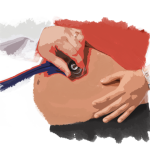
In spite of having the most expensive Sanitas policy the customer care staff told me that it was I that had to find the best genetics specialist because they did not know who they were. Regarding the blood extraction from the baby’s umbilical cord, they also weren’t sure about what centers could do the test. However, they provided a list of several hospitals and clinics to try our luck. We called all of them, not only the private ones but also the public but none of them had anyone who could help with this, it being August. Everyone was on vacation!
I insisted and insisted. We even went to IVI (IVF clinic in Madrid) where we were informed that La Paz was the only Social Security hospital in Madrid where these types of requests could be made. In La Paz a nurse informed me that the test would be impossible until September, I would have to wait and pass the period of voluntary interruption of the pregnancy. “And what do you want me to do?” – added the nurse. I couldn’t help but answer: “Thank you ma’am. Are you telling me that the only option that public healthcare in this country gives me is to have a child with problems or abort her without being certain?” In that moment I understood the violent reactions that some people have in situations with limits like the ones I was undergoing: it was the life of my daughter.

My last opportunity was the Monteprincipe Hospital in Boadilla. I called and fortunately found Dr. Jimenez and a team of specialists in high-risk pregnancies that could see me that very afternoon. After explaining the whole situation to them they agreed with our plan. So, little after I arrived at the doctor’s office, the best specialist in Spain in this type of interventions, Dr. Jesus Rodriguez Calvo – recent arrival from the UK – through a puncture extracted a blood sample from the umbilical cord of my little one to analyze it directly: painless, without anything happening to her, without the bother of amniocentesis, although I did need the same rest.
The blood was immediately taken to the lab at Abacid Hospital in Sanchinarro. I asked which doctor would be responsible for the analysis. They told me that due to the critical nature of the situation that it would be the general manager of the lab, the geneticist Laura Rodriguez Martinez. Days later I was informed that she had interrupted her vacation to take care of this. We were dealing with professionals of the highest caliber. The two best laboratories in Madrid were managing the analysis in parallel, without knowing the results of the other. Abacid laboratory (Sanchinarro Hospital) and SaniLab-LabCo (Sanitas Hospital La Moraleja) would carry out three tests: PERIPHERAL BLOOD KARYOTYPE, FISH and ARRAY CGH. These genetic tests, especially the ARRAY CGH, are the ones that enable a complete analysis of the chromosomes and the baby’s genes. With those the specialists can know if the chromosomes are fine or not and if they are not, where, why and what specific problems the little one would have.
When one is faced with this type of situation, it is important to demand that they do all the tests from day 1. It’s an additional cost of 1,000 or 1,500 euros, if you have private health insurance. If your doctor doesn’t request it, they will do the test one by one. They will wait for the results of the first before doing the second, to save you money: but the time is more valuable in these moments.

The PERIPHERAL BLOOD KARYOTYPE determines how many chromosomes it has. Forty-six is normal. They extract blood and check how many there are. It is the test they did on us as soon as they knew the baby had forty-seven chromosomes. It identifies if you or your partner has forty-six chromosomes, because if so then it’s out, whoever is the originator influences the genetic problem that the baby may have thereafter.
The FISH test helps to identify which chromosome is duplicated. Its denomination in Wikipedia is FISH or Fluorescence In Situ Hybridization: “a technique of marking chromosomes which these are hybridized with waves that release fluorescence and allow the visualization, distinction and study of the chromosomes same as the anomalies that may be presented. This technique allows for fast determination of aneuploidies, microdeletions, duplications, inversions as well as adjudication of a genetic marker to a chromosome (genetic mapping).”
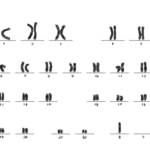
In addition, it tests for the existence of uniparental disomy. This appears when the chromosome that has the problem is made up only by genes of the mother or father, which makes the situation graver due to latter consequences.
The last test is the ARRAY CGH. This is a type of super x-ray with the chemical composition of each chromosome and it’s carried out to know the detail of each of them and compare them with those of known diseases. Through this incredible analysis – the most important, from my point of view- they find out if your child will have a problem and what it might be.
Completely dismayed although already familiar with much medical terminology and totally pessimistic with the results that these results could provide us, the general manager of Labco at this time – Carmen Martin Mesa – surprised us with the first hopeful news after so many disappointments. They had discarded the uniparental disomy and there was a possibility that the “Array could be normal”. We didn’t understand the importance of that until they explained that they were speaking of the possibility that the extra chromosome of our baby could be empty that it doesn’t have genetic coding matter, which means that she would develop normally although she would have forty-seven chromosomes.
What!!!!????? In spite of having an extra chromosome, it could be empty?
She gave us all sorts of details, as if we were genetic experts: “The baby has two copies of each gene for all of its genome that is what is normal in humans because we are diploid: a copy from father and mother are always inherited. The invdup region of your daughter could be a centromere, alphoid sequences. The fact that regions are not codified would mean that there is no functional genetic material, which means there are no genes, neither active nor inactive.” It was more Chinese although we were able to understand it. To confirm all of these hopeful expectations, we had to wait for the results of the last test, ARRAY CGH. We only hoped for a miracle.
It happened! A day later we received the results. The ARRAY was normal because the chromosome was empty, both the extracted sample from the cordocentesis as well as the amniocentesis!!! Both labs were in agreement and results matched: my little one wouldn’t have any mental or physical development problems!
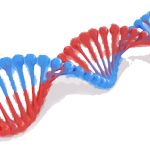
hrilled with all the good news, we sent the results to the best specialists that we found to confirm it: Carolyn Shanen in the US – genetics specialist related to chromosome 15, Dr. Chirigliani in Italy (through the Labco) and the Dr. Maria Luisa Martinez Frias of the Carlos III Health Institute, that would summarize the work of Carmen Martin Mesa and Sonia Gonzalez Alvardo (Labco) and Laura Rodriguez Martinez (Abacid). All of them confirmed the diagnosis: my daughter would not only have a normal development but would also have lesser possibilities of suffering other illnesses compared to the babies that aren’t able to benefit from test such as the ARRAY CGH and are born in absolute genetic ignorance.
What is my conclusion?
My first technical conclusion is that an extra chromosome doesn’t have to mean problems. As a matter of fact up to 70% of the cases of babies can be normal (source NCBI). That being said, when you’re told your little one has this anomaly situate yourself in the worst-case scenario, but fight to the end to really understand what is happening. I hope that the previous information was helpful and that you come across professionals and with as big hearts as the ones that helped us in this situation.
My second technical conclusion is that genetics are marvelous and we must take advantage of them and all the possibilities they offers us to make important life decisions, and Spain should encourage this type of research.
The rest of my conclusions are personal and I also want to share them, because I feel they are just as important as the before mentioned.
The first is that we are in this world to fight for our children and I cannot stand still contemplating what is currently happening in Spain with the new abortion law that Mr. Gallardon wants to push forward. A retrogressive law that will mean that many babies will not be born in the future, because people like myself exist as well as those that defend the contrary and we will stop having children or renounce to having them prematurely once receiving diagnosis such as the one I received at the time.
I know what I’m talking about. I’ve been there. I’ve been through it and I haven’t changed my stance. Forty-seven chromosomes are not just down-syndrome. It is a vegetative state, children without mobility or without normal brain activity. They could be children that practically do not sleep or eat and do their necessities on themselves. It means aggressive children that mistreat their siblings and parents because they don’t know what they are doing. And people like me or my husband, believe in a full life and science as a vehicle to guarantee a better existence for people, we are going to abort when we are faced with negative diagnosis, whether the current Justice Minister wants it or not. We’ll go to Portugal or England because other more advanced countries (my goodness! I’m talking about Portugal being ahead of Spain!) respect our perspective.
If then, prohibition to abort freely in Spain will only provoke many women to abandon their babies without sufficient information about the anomalies of their future children, without being sure, for the hurry, for the ‘just in case’, because in Spain you can’t freely do all the test you want to calmly make your decisions to check if the extra chromosome is simply an empty marker.
Their law is the law of death, Minister, it will provoke many babies to not be born for fear of having them or once conceived, for fear of moving it forward as we receive odd diagnostics like the one I received with my daughter. However a law that respects both options as the current one, means more children in the world: from those of us that believe in a full life, and of those that prefer to accept their child come what may.
Why is their panic toward abortion? Why is there fear of scientific tests? Those that speak of it without going though such situations as ours, do not know what it means to face that word. A baby moves within your belly, you feel it, and if you have to decide to not go forth with the pregnancy, you’ll have to face a series of obstacles that will make even worse the worst decision of your life. First you’ll have to ask for authorization from the Ministry, then you’ll have to go to an abortion clinic where women with fetuses suffering from malformations or frustrated youth that did not take preventative measures enter the operating room and receive an injection that ends the life of the little one. If they don’t give birth through induction, a vacuum is used to extract the baby. Is there someone, a mother, a family that wants to go through this situation without a reasonable cause?
People and countries shouldn’t be afraid of freedom of thought and action related to reproductive matters because freedom only brings about positive consequences, and related to gestation it only means LIFE. In Spain, to date, 31 January 2013, you’re free to decide if you want children and science allows you to check if they are fine or not and decide to not have them if you’re not sure. They speak of it as the PSOE’s Abortion Law, but I think it’s the Life Law, a law that respects first and foremost those affected by genetic malformations. An abortion is the most difficult decision that a family faces, Minister, and only being certain that we don’t want to have this child, will we walk away from it.
Science and freedom helped me become a mother of two healthy kids that today fill us with happiness and courage to write such things as this. If any of these circumstances change, if my access to science or my freedom to choose Life changes, if the law that you are trying to bring about puts Spain again at the tail of Europe in terms of sexual and reproductive rights, I will not have any more children within the Spanish healthcare system. Although I will continue fighting, as we did for the life of my daughter, so that everything changes in this country, the world, and finally a win for laws that support Freedom, Science and Life.
What actually needs to improve.
I don’t want to critique without offering solutions, so here’s my small grain of salt. I want to finish by reflecting on what should improve after the fight for my daughter’s life, so that no family has to go through our suffering.
The first thing I would fix is to demystify the tests prior to birth and would make them available to all pregnant women, as it occurs in the UK, Germany, France or Italy. I would offer gestating women the opportunity to have a CVS before amniocentesis – I didn’t even know it existed. Only through Google was I informed stemming from what happened with my daughter. This way, if your kids aren’t fine, there is a possibility to abort much earlier than when you feel them in your belly and are in the fifth month of gestation.
I would fight for these genetic tests to be free at least for those that cannot pay for them.
I would change the need for the approval by the Minister in order to abort: it’s a decision for no one aside from the mother and their partner, if then.
Finally, I would give the option that the mother could be intervened by her own gynecologist in her hospital. Doing it any other way only imposes psychological shock; and it’s incomprehensible why women in a country like Spain would need to be aggrieved during a difficult situation such as this one.
I hope, misters of PP, that you work on the before mentioned and leave us Spaniards alone to manage our affairs. You have a disastrous judicial system to fix and corruption similar to third world nations to solve. Leave alone the abortion law. It’s a Law of Life. For the things that make us vanguards don’t go and change them.
Freedom is Life. So damn your new Abortion Law, Alberto Ruiz Gallardon.
